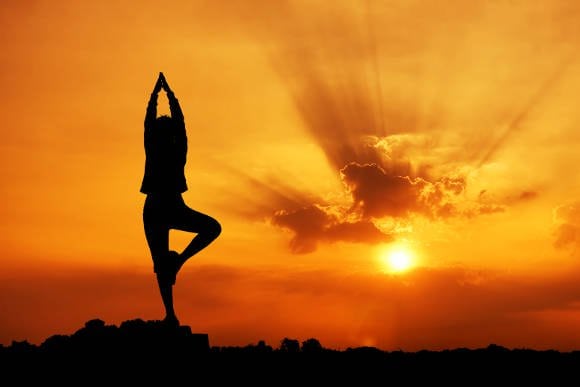Of all the kinds of yoga being practiced out there today, Bikram yoga is deemed to be one of the most challenging forms, if not the most challenging of all. What makes it difficult isn't the full 26 twisty and bendy poses, but rather the fact that it is practiced in a heated room of 95 to 100 degrees Fahrenheit. While that may sound like torture, this heated room is the key to getting all the benefits that Bikram yoga has to offer.
Physiological Benefits of Bikram
Practitioners are quick to vouch for the improvement in their health and strength with regular practice of Bikram. One of the primary reasons is that the heated room aids blood circulation throughout the body. The controlled breathing method also supplements this process, as the flow of air into the lungs help spread fresh oxygen throughout the system. There are certain postures (asanas) are also specifically designed to block blood flow in certain regions for a full minute. Upon releasing from the asana, the blood surges forward with fresh new blood cells built up in that one-minute lockup. Other poses are designed to build and establish solid balance, combining varying degrees of flexibility with strength, and more importantly, the incredible concentration needed to hold the pose. Among the many physiological ailments known to have been alleviated by Bikram are alignment issues in the spine, osteoarthritis, cardiovascular diseases, blood pressure, diabetes, rheumatism, and many more.
Core Muscle Strength Development
Because all 26 poses are designed to push and pull your muscles constantly, such as the King Dancer Pose (Natarajasana), another well-known benefit of Bikram Yoga is the reshaping of the body into a leaner and longer toned form. Many people practice Bikram Yoga for this reason alone. Also, because of the heated room, the muscles become warmer and therefore more flexible, allowing the practitioner to ease into the asanas. Bikram is also strict about keeping the knees and thighs active to ensure balance and equal distribution of weight throughout the foot. This relieves your spine from the burden of your body weight while executing the postures, reducing the risk of back injury, particularly the compression of the lower back discs. Athletes who practice Bikram Yoga have found that they have become less prone to injuries as well, thanks to their added mobility and flexibility in the joints and muscles. Their levels of endurance also increase the more they practice Bikram. Additionally, weight loss is touted as one of the biggest benefits of Bikram Yoga, and not just because you're sweating out all your water weight. The combination of the strenuous poses and the heated room, as well as pronounced and well paced breathing, leads to an increase in one's metabolism, ultimately resulting in weight loss.
Psychological Benefits of Bikram Yoga
The most rewarding aspect of Bikram is not the weight loss or the improved health, but rather the fact that you have overcome a full hour and a half of practice in a heated room. Yoga instructors will be quick to point out that this exercise is not only a physical challenge, but also a mental feat in and of itself. It makes you dig deep into your reserves of strength to just hang in there for one more minute, and then another, until you're finally lying in Corpse Pose (Savasana). It may start out as a matter of pride, a desire to not be the first one to faint or leave the room, but soon you'll find that you're doing this for yourself and no one else, and there's incredible strength in knowing that. Bikram practitioners find this type of yoga to be specially good at developing one's focus, as the whole exercise teaches you to stay focused despite the heavy discomfort of heat.
While some people are quick to pass up on Bikram because of the heat and near-unbearable humidity, it remains popular because of its attested benefits – not only for the body but also for the mind, and for many, for the spirit. It should go without saying that all types of yoga are beneficial. But whichever type of yoga you choose to practice, you need the the right kind of commitment to experience the full benefits of yoga.


